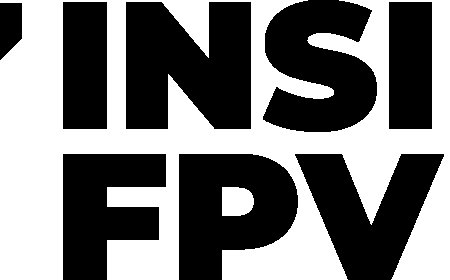Employee Management Software: Simplify HR Tasks with Ease
In today’s fast-paced business environment, managing employees efficiently is vital for success. Whether it’s onboarding, tracking attendance, managing payroll, or handling employee records—human resources (HR) departments have a lot on their plate.

In todays fast-paced business environment, managing employees efficiently is vital for success. Whether its onboarding, tracking attendance, managing payroll, or handling employee recordshuman resources (HR) departments have a lot on their plate. Thats where employee management software comes into play. This digital solution helps streamline HR operations, reduce administrative workload, and boost overall workplace productivity.
What is Employee Management Software?
Employee management software is a digital platform designed to help businesses manage all aspects of their workforce. It consolidates various HR functions into a single interface, including:
-
Employee records and database management
-
Attendance and time tracking
-
Payroll and benefits processing
-
Performance evaluation
-
Recruitment and onboarding
-
Compliance management
By automating repetitive and time-consuming tasks, this software empowers HR teams to focus on strategic initiatives rather than administrative chores.
Key Features That Simplify HR Tasks
Lets take a closer look at the main features that make employee management software a must-have tool for modern businesses.
1. Centralized Employee Data
Gone are the days of maintaining bulky filing cabinets or juggling multiple spreadsheets. With employee management software, all employee informationsuch as personal details, job titles, salary history, and documentsis stored in a centralized, secure digital location. This not only reduces clutter but also ensures data accuracy and easy retrieval when needed.
2. Automated Attendance and Leave Tracking
Manual attendance systems are prone to errors and manipulation. Employee management software comes with biometric integration or web-based check-ins that accurately track working hours, overtime, and late arrivals. Additionally, it allows employees to apply for leaves online, while HR can approve or reject requests with just a few clicks.
3. Efficient Payroll Processing
Payroll processing is one of the most complex and critical HR tasks. The software automates salary calculations based on attendance, bonuses, taxes, and deductions. It also generates payslips, ensures compliance with labor laws, and integrates seamlessly with accounting systemssaving both time and effort.
4. Smooth Onboarding Process
A structured onboarding process improves employee satisfaction and retention. With employee management software, new hires can complete their documentation online, receive welcome kits, and get access to company policies and training materials without physical meetingsperfect for remote or hybrid teams.
5. Performance Evaluation Tools
Tracking employee performance manually can be subjective and inconsistent. With built-in performance management modules, the software allows you to set goals, monitor KPIs, and schedule reviews. This promotes transparency, identifies high performers, and highlights areas for improvement.
6. Customizable Workflows
Every organization has unique HR processes. Most modern employee management systems offer customizable workflows to match your business needs. Whether you want to automate a promotion request flow or set reminders for contract renewals, the system adapts to your HR policies.
Benefits of Using Employee Management Software
Implementing employee management software brings several measurable benefits to both HR teams and the organization as a whole.
? Increased Productivity
By automating routine tasks like attendance management, payroll processing, and data entry, HR professionals save hours every week. This allows them to focus on strategic work like talent acquisition, employee engagement, and culture building.
? Reduced Human Errors
Manual data entry is prone to mistakes. A centralized system ensures that calculations, records, and workflows are error-free and consistent. This is especially important when dealing with payroll and compliance.
? Enhanced Data Security
Most employee management platforms come with advanced security features like encryption, two-factor authentication, and role-based access. This protects sensitive employee information from unauthorized access or data breaches.
? Improved Employee Experience
Self-service portals allow employees to view payslips, track leave balances, update personal details, and raise service requests without involving HR. This autonomy improves satisfaction and reduces HR workload.
? Scalability for Growing Businesses
Whether you're a startup with 10 employees or an enterprise with 10,000, employee management software can scale with your business. You can add new users, features, and modules as your HR needs evolve.
Choosing the Right Employee Management Software
Not all employee management systems are created equal. Here are a few factors to consider when choosing the right one for your business:
? User-Friendly Interface
Look for software that is intuitive and easy to navigate. A cluttered dashboard or complicated features can frustrate users and reduce adoption rates.
? Integration Capabilities
Ensure the software integrates with your existing tools like accounting systems, ERP platforms, or communication apps like Slack or Microsoft Teams.
? Mobile Accessibility
With the rise of remote and hybrid work, mobile access is a must. A good solution should offer a robust mobile app that lets employees and HR teams manage tasks on the go.
? Customization Options
Your HR processes may not be standard. Choose a platform that offers customizationsuch as editable forms, custom fields, and adaptable workflowsto fit your exact requirements.
? Cost and ROI
Evaluate the software's cost against its potential return on investment. Many platforms offer subscription-based pricing, making them affordable for businesses of all sizes.
Top Use Cases of Employee Management Software
Lets explore how different industries and departments benefit from using employee management software:
? Startups and SMEs
Small businesses with limited HR staff benefit from automation and centralized data management. These tools help reduce HR costs while improving efficiency.
? Large Enterprises
Enterprises use advanced modules for compliance, performance management, and analytics to manage a large workforce across multiple locations.
? Remote Teams
Companies with remote or hybrid teams use cloud-based platforms to onboard, manage, and engage employees virtually without any physical interaction.
? HR Consulting Firms
Firms offering outsourced HR services use employee management platforms to handle multiple client accounts efficiently.
How It Helps HR Transform from Administrative to Strategic
Traditionally, HR teams have been bogged down with administrative tasks. But with employee management software, they can shift their focus to strategic roles such as:
-
Workforce planning
-
Employee engagement
-
Talent management
-
Learning and development
-
Diversity and inclusion initiatives
This transformation positions HR as a core driver of organizational growth, rather than just a support function.
Conclusion
In an era where efficiency, accuracy, and employee satisfaction are key to business success, investing in employee management software is no longer optionalits essential. It simplifies complex HR tasks, improves productivity, ensures compliance, and enhances the employee experience.
Whether you're a small business aiming to streamline HR operations or a large enterprise managing a vast workforce, this digital solution can revolutionize the way you manage your people. Embrace automation, eliminate inefficiencies, and empower your HR department with the right employee management softwarebecause managing people shouldn't be complicated.







































![Play99 Login & Registration Guide for Indian Users [2025 Update]](https://www.atlantanewsplus.com/uploads/images/202507/image_140x98_6870c1df7bfcd.jpg)